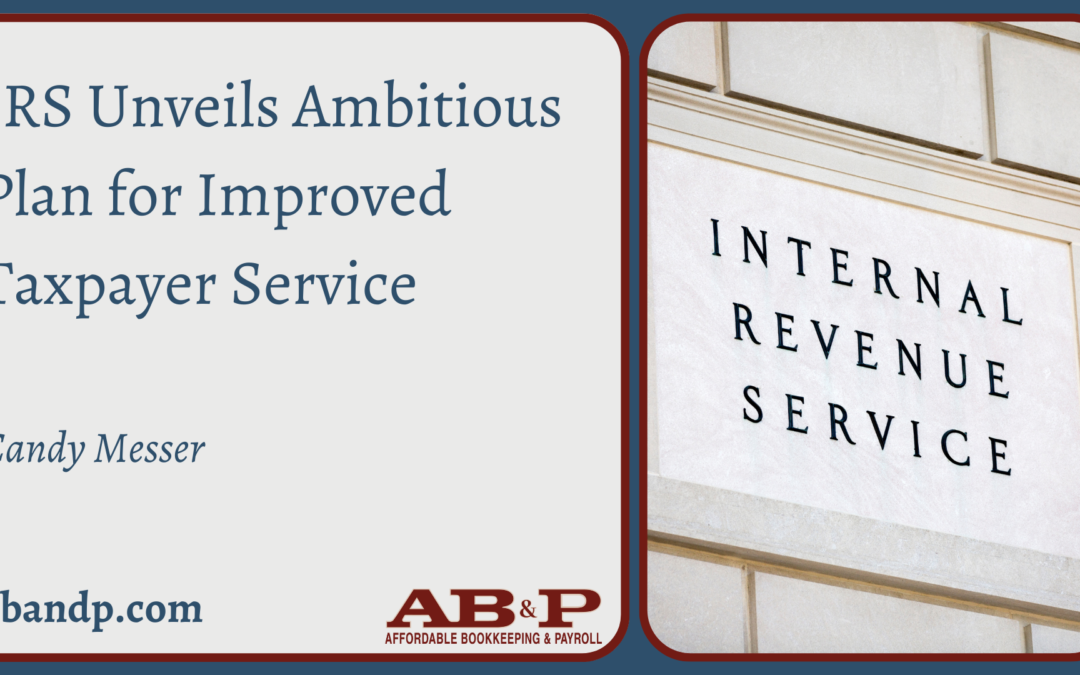Today, I want to bring some good news to all the taxpayers in the United States who have experienced frustration while dealing with the Internal Revenue Service (IRS). If you’ve ever waited for months or even years to speak with an IRS agent, get an update on your filing status, or receive a refund, the tax man has heard your concerns and is taking action.
The IRS recently announced an ambitious effort to transform the tax agency and drastically improve service to taxpayers and the nation in the next decade. This plan comes as a result of an influx of funding included in last year’s Inflation Reduction Act, which provided an additional $79.6 billion to the IRS on top of its annual appropriations. These resources will be used to address three primary objectives.
Firstly
The IRS aims to enhance its customer service operations, ensuring that taxpayers receive the assistance they need to meet their obligations and take advantage of the tax incentives they are eligible for. No more long waits and frustrating interactions; the goal is to simplify and streamline the process for taxpayers.
Secondly
The agency plans to allocate resources to handle the complex filings of wealthy individuals and large corporations. By cracking down on high-dollar noncompliance, the IRS aims to address the tax gap and ensure everyone pays their fair share.
Thirdly
The IRS recognizes the importance of updating its outdated technology and security systems. By delivering cutting-edge technology, data, and analytics, the agency can operate more effectively and efficiently, leading to faster resolution of taxpayer issues.
The plan has five key objectives to make life easier for the average taxpayer:
- Simplify and streamline: Dramatically improve services to help taxpayers meet their obligations and receive eligible tax incentives.
- Act faster: Quickly resolve taxpayer issues when they arise, reducing delays and improving response times.
- Crackdown on wealthy scofflaws: Focus on enforcing tax compliance among taxpayers with complex filings and high-dollar noncompliance to narrow the tax gap.
- Upgrade outdated tech: Implement cutting-edge technology, data, and analytics to operate more effectively and modernize IRS operations.
- Beef up the workforce: Attract, retain, and empower a highly-skilled, diverse workforce to deliver results for taxpayers.
This plan comes at a crucial time when the IRS has been grappling with a backlog of unprocessed returns, largely due to the pandemic. With millions of returns still waiting to be processed, the fresh funding and strategic approach should help smooth things out in the coming years.
However, we must acknowledge that the IRS faces significant challenges, including staffing shortages and outdated technology. The agency’s systems and processes are in dire need of modernization. A recent report from the Government Accountability Office highlighted the obsolete nature of many IRS systems.
Despite these challenges, the IRS is optimistic about the future. The plan represents a bold vision for what the agency can achieve with long-term funding. Commissioner Danny Werfel has stated that the IRS now has an opportunity to transform its operations and provide the service that taxpayers deserve.
While it may take time for all the improvements to become evident, the plan gives us hope for a better-functioning IRS that is equipped to handle the demands of the modern world. Ten years from now, we envision an IRS that is efficient, responsive, and user-friendly.
So, as taxpayers, let’s look forward to a brighter future with the IRS and embrace the positive changes that lie ahead. We can rest assured that our voices have been heard, and the IRS is committed to serving us better.
